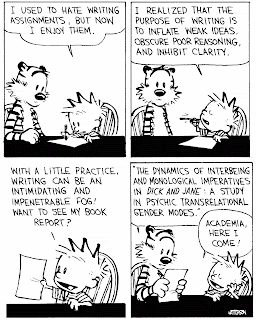
Courtesy of CGU Writing Centre
Writing papers is not second nature for most of us. It isn’t easy to slave over the words, facts and figures that form an integral part of white collar work, while putting forth a cogent and convincing argument.
Fortunately, there is an art and a science to writing policies, strategic plans, strategies, and other documents geared towards rallying support, budgets and stakeholder buy-in. Here are some tips that I have learnt from my years of experience in wielding the pen as the sword.
WHAT DO WE WANT TO ACHIEVE?
First and foremost, write down your objectives for the paper. What does it seek to achieve? Why are the outcomes and goals which you hope to reach at the end of your proposal? This will help to steer the rest of the document.
WHO IS THIS FOR?
Consider next who your readers will be, especially the key decision makers. It is useful to provide the right context to your document in the form of a background, history or introduction. It is usually a good discipline to keep backgrounders as short as possible, with details in the footnotes or annexes.
Depending on your readers, the writing style will also vary. A formal organisation (like a court of law) will require a more officious tone of voice in its document while a circus may require something less weighty. The length of the paper will also vary depending on the information needs of your audience.
WHERE ARE WE AT?
After splashing on the backdrop, you may sometimes need to put in more paint to set the picture right. This is where you should provide information on the current situation with an analysis of where your organisation/division/team is at. Typically, this will include the following:
a) Shifts and movements in the operating environment
b) Internal issues faced by the team
c) Fresh opportunities presented
There are multiple tools and theoretical frameworks available to analyse your external and internal environments. Choose one or two relevant for your purposes and try not to belabour the point once its made.
HOW SHOULD WE DO IT?
This is probably the most significant part of the document, and details the strategies, approaches, and tactics used to solve the problem or seize the opportunity at hand. As the saying goes, this is where the rubber meets the road. While there are no hard and fast rules on how much details to provide, one should always consider…
a) Conducting a reality check on what can and cannot be done, given current capacities and competencies
b) Timing one’s actions appropriately in a phased approach
c) Gaining prior buy-in from key stakeholders/staff involved in the exercise
WHAT’S IN IT FOR US/YOU/THEM?
After cobbling together the strategies and actions needed, outline what the key benefits and deliverables are. What are the Key Performance Indicators (KPIs, a much loathed word) that you’re seeking to achieve? How do you measure success, both tangible and intangible?
WHEN, WHO, and HOW MUCH?
The penultimate brush strokes to the canvas answers the hard questions that accompany any written proposal. Namely:
a) The timelines and deadlines for this exercise, normally captured in a gantt chart
b) The persons responsible for delivering the individual pieces in the puzzle, with specific roles mapped out if possible
c) The budgets needed to make this a reality, and where the sources are going to be
THE PARTING SHOT
After starting off with a strong beginning, one should end on an equally strong note. Put together your recommendations and conclusion using the most impactful words that you can muster. This is critical because you do want the decision makers to swing in your favour. A weak ending is probably the worst thing that you can do for your proposal.
